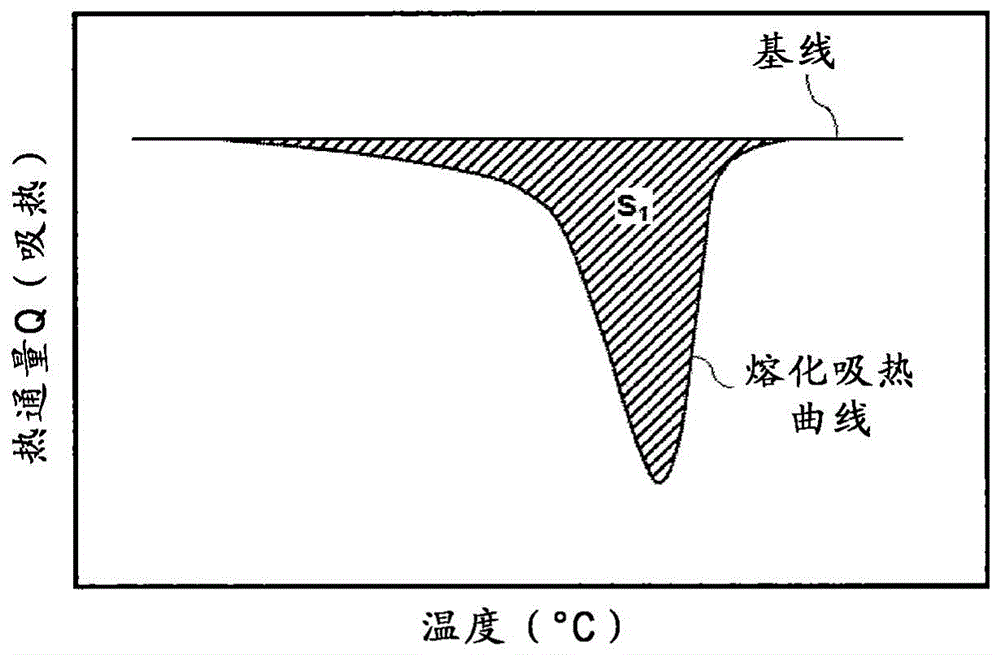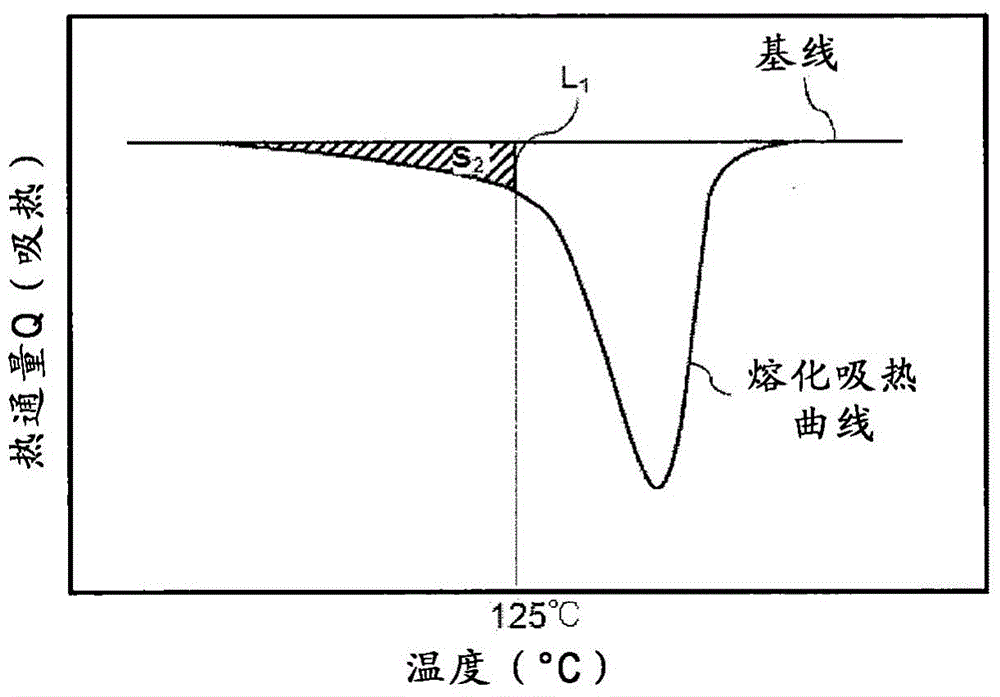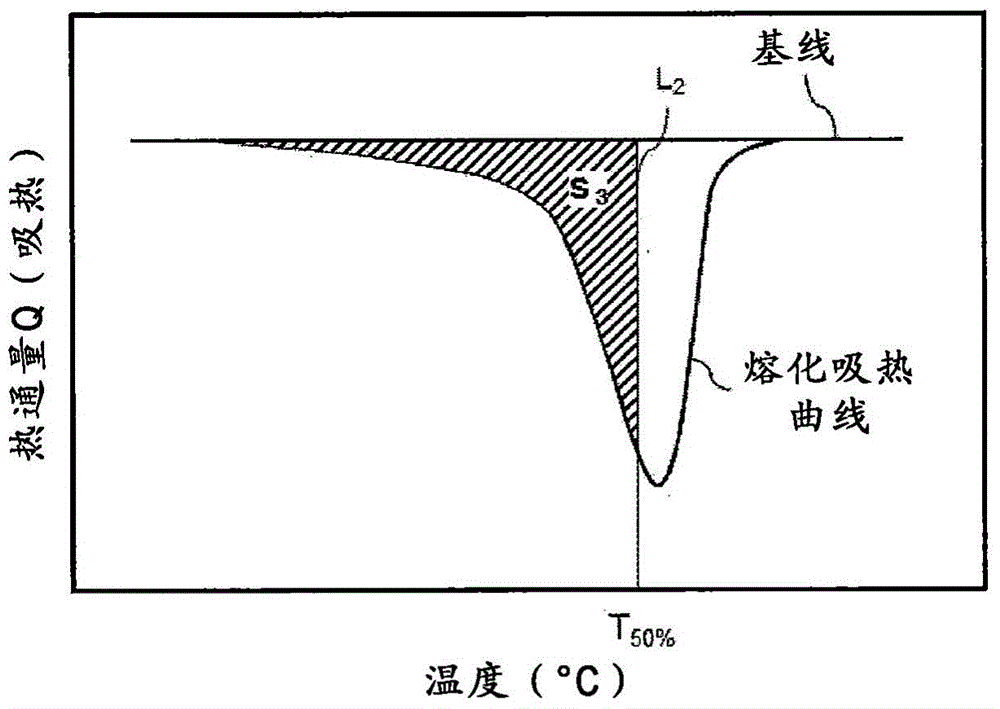Battery separator and method for producing same
A diaphragm and battery technology, applied in the field of battery diaphragm and its manufacturing, can solve the problems of membrane closure characteristics and airtightness deterioration, difficulty in ensuring safety, airtightness deterioration, etc., and achieve the effect of excellent closure characteristics
- Summary
- Abstract
- Description
- Claims
- Application Information
AI Technical Summary
Problems solved by technology
Method used
Image
Examples
preparation example Construction
[0069] (1) Preparation process of polyolefin resin solution
[0070] The polyolefin resin solution is prepared by adding a suitable film-forming solvent to the above-mentioned polyolefin resin, followed by melt-kneading. Various additives such as the above-mentioned inorganic fillers, antioxidants, ultraviolet absorbers, antiblocking agents, pigments, and dyes can be added to the polyolefin resin solution as needed within a range that does not impair the effects of the present invention. For example, micronized silicic acid can be added as a pore former.
[0071] As the film-forming solvent, any of liquid solvents and solid solvents can be used. Examples of the liquid solvent include aliphatic or cyclic hydrocarbons such as nonane, decane, decalin, p-xylene, undecane, dodecane, and liquid paraffin, and mineral oil fractions having boiling points corresponding to them. In order to obtain a gel-like sheet with a stable solvent content, it is preferable to use a non-volatile li...
Embodiment 1
[0193]
[0194] In 100 parts by mass, the mass average molecular weight (Mw) of 30 mass% is 2.5×10 6 The Mw of ultra-high molecular weight polyethylene (UHMWPE) and 70% by mass is 2.8×10 5 Dry mixing of 0.375 parts by mass of tetrakis[methylene-3-(3,5-di-tert-butyl-4-hydroxyphenyl)- propionate] methane to give a mixture.
[0195] Mw of UHMWPE and HDPE was determined by gel permeation chromatography (GPC) under the following conditions (the same applies hereinafter).
[0196] ・Measuring device: GPC-150C manufactured by Waters Corporation
[0197] ・Column: Showa Denko Co., Ltd. "Shodex" (registered trademark) UT806M
[0198] ·Column temperature: 135℃
[0199] Solvent (mobile phase): o-dichlorobenzene
[0200] ·Solvent flow rate: 1.0mL / min
[0201] ・Sample concentration: 0.1% by mass (dissolution condition: 135°C / 1h)
[0202] ·Loading volume: 500μL
[0203] Detector: Differential refractometer manufactured by Waters Corporation
[0204] • Calibration curve: Prepared wi...
Embodiment 2
[0212]
[0213] As in Example 1, a polyolefin microporous membrane (a) was used.
[0214]
[0215]50.0 mass parts of solvents were added to 1.0 mass parts of CMC product number 2200 (made by Daicel FineChem Co., Ltd.), and it stirred for 2 hours. Next, add 49.0 parts by mass of nearly spherical alumina particles with an average particle diameter of 0.5 μm, stir for 2 hours to fully disperse the alumina particles, and then use polypropylene felt with a filter particle size (initial filtration efficiency: 95%) of 10 μm Finely filtered with a type filter to prepare a coating solution (B). At this time, the volume ratio of the resin component and the fine particles was 5:95.
[0216]
[0217] The polyolefin microporous membrane (a) was coated with the coating solution (B) in the same manner as in Example 1, and dried to obtain a battery separator.
PUM
| Property | Measurement | Unit |
|---|---|---|
| thickness | aaaaa | aaaaa |
| glass transition temperature | aaaaa | aaaaa |
| melting point | aaaaa | aaaaa |
Abstract
Description
Claims
Application Information
 Login to View More
Login to View More - R&D
- Intellectual Property
- Life Sciences
- Materials
- Tech Scout
- Unparalleled Data Quality
- Higher Quality Content
- 60% Fewer Hallucinations
Browse by: Latest US Patents, China's latest patents, Technical Efficacy Thesaurus, Application Domain, Technology Topic, Popular Technical Reports.
© 2025 PatSnap. All rights reserved.Legal|Privacy policy|Modern Slavery Act Transparency Statement|Sitemap|About US| Contact US: help@patsnap.com



